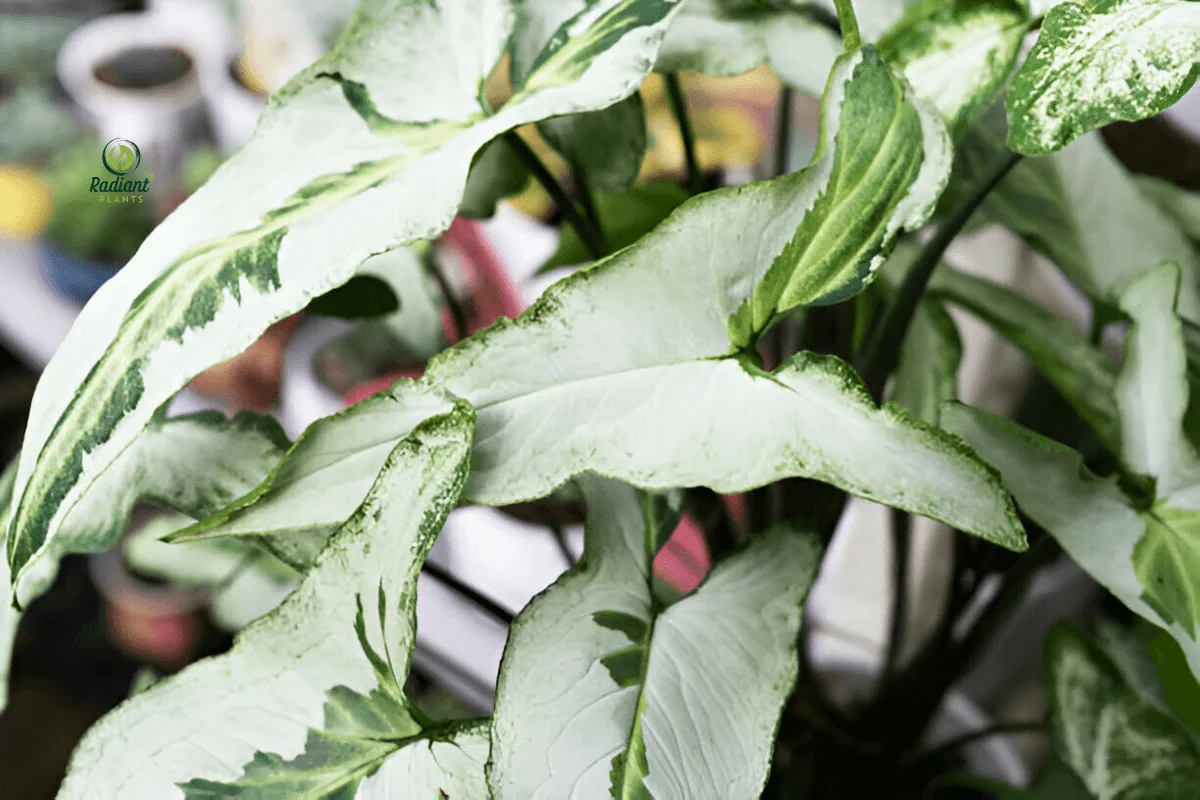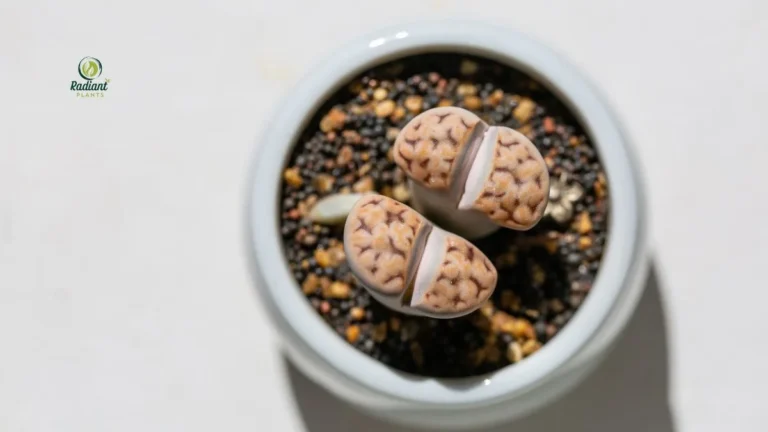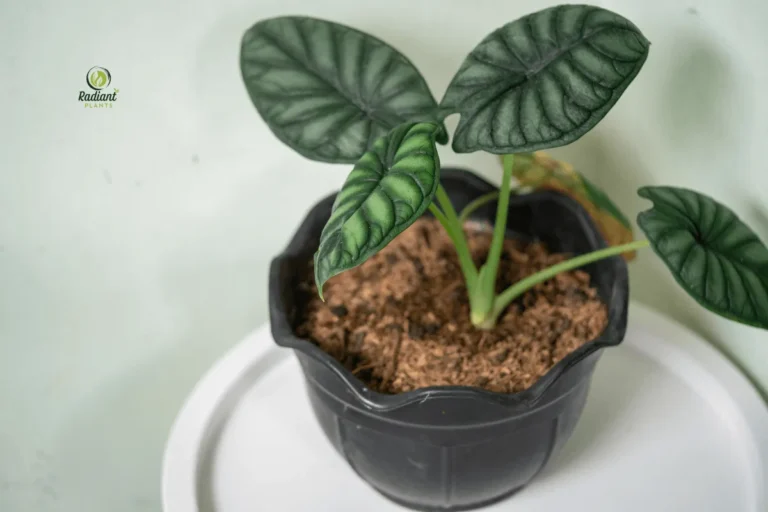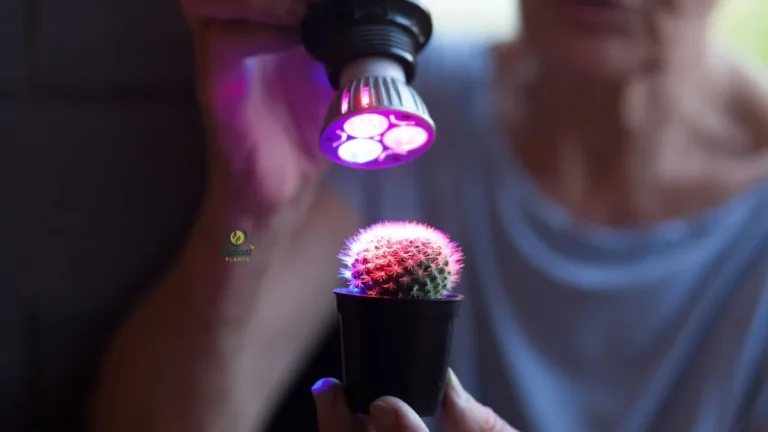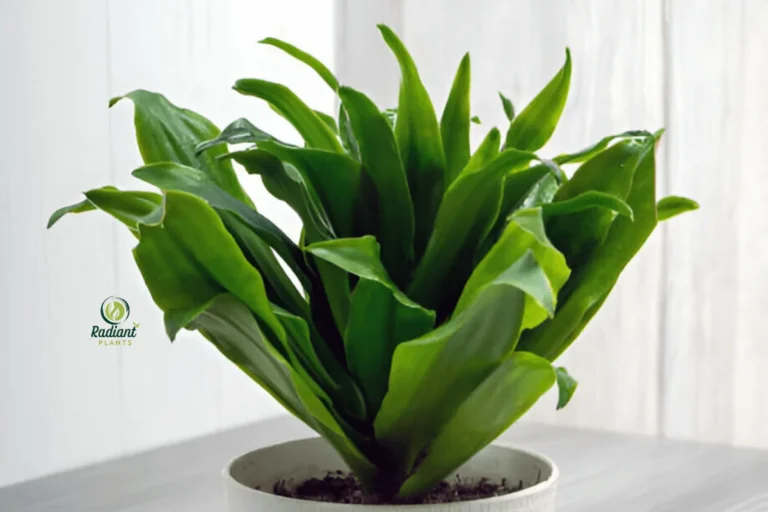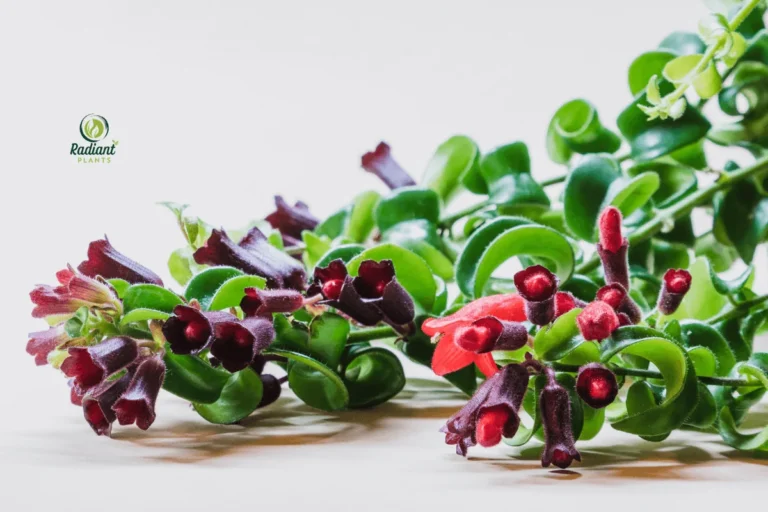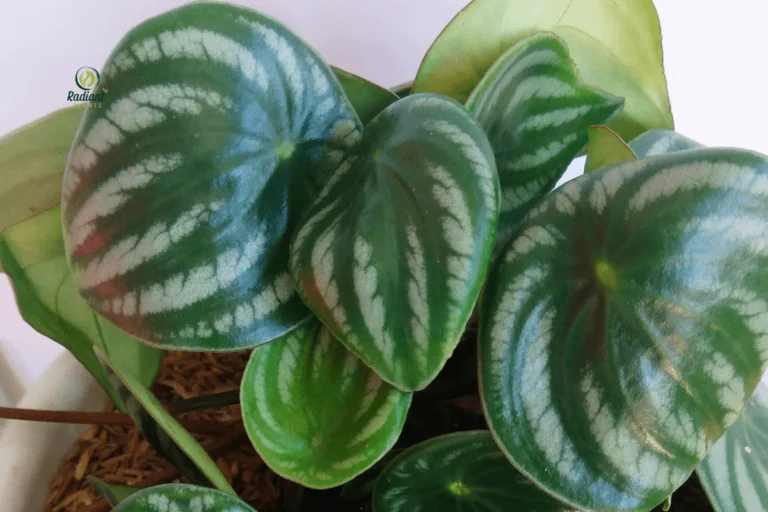7 Arrowhead Plant Varieties That Will Steal Your Heart
Have you ever walked into a room and felt instantly captivated by a plant’s unique presence? That’s the magic of the arrowhead plant (Syngonium podophyllum). As a fellow plant enthusiast who once rescued a struggling arrowhead cutting from a friend’s office, I’ve watched it transform into a lush cascade of heart-shaped leaves that brings life to my home. These resilient beauties from the Araceae family aren’t just visually stunning—they connect us to nature’s artistry in our everyday spaces. Whether you’re a seasoned plant parent or just beginning your green journey, these seven arrowhead plant varieties are guaranteed to capture your heart and transform your living space.
Table of Contents
Table of Contents
Understanding the Arrowhead Plant: Nature’s Living Art
The moment you bring an arrowhead plant home, you’ve invited a piece of tropical wonder into your daily life. More than mere decoration, these living sculptures tell stories through their evolving forms and distinctive character.
What Makes Arrowhead Plants Special?
Deep within the tropical rainforests of Central and South America, arrowhead plants thrive in dappled sunlight beneath the forest canopy. This native environment explains their remarkable adaptability to indoor conditions. Part of the distinguished Araceae family, these relatives of philodendrons and pothos carry the botanical elegance that makes this plant family so beloved.
You might encounter these plants under various names—Nephthytis, Goosefoot plant, or their scientific designation, Syngonium. Their most captivating feature remains those distinctive arrow-shaped leaves that undergo a fascinating transformation as they mature, often becoming more deeply lobed and expressive.
Beyond their visual charm, arrowhead plants serve as natural air purifiers. The NASA Clean Air Study identified these botanical wonders among plants capable of filtering indoor air pollutants, essentially working as living air fresheners while beautifying your space.
The Evolution of Arrowhead Plants in Home Decor
Since their introduction to the houseplant scene decades ago, arrowhead plants have maintained steady popularity, though recent years have witnessed a remarkable resurgence. Plant enthusiasts increasingly appreciate their versatility—whether cascading from hanging baskets, climbing moss poles, or maintaining compact forms on tabletops.
Social media plant communities regularly showcase these adaptable beauties, with hashtags like #SyngoniumLove and #ArrowheadPlant generating thousands of posts from devotees worldwide. Their relatively forgiving nature makes them perfect for both novice plant parents and seasoned collectors looking to expand their botanical families.
7 Stunning Arrowhead Plant Varieties You Need to Know
The world of arrowhead plants offers remarkable diversity. Each variety brings its unique personality to your plant collection, from subtle elegance to bold statements.
1. Syngonium White Butterfly

The White Butterfly variety represents perhaps the most recognized arrowhead plant, featuring bright green leaves gorgeously accented with creamy white variegation that seems to dance across each leaf. This variety strikes the perfect balance between distinctive character and easy care.
White Butterfly thrives in medium indirect light, though the white portions may appear more pronounced with slightly brighter exposure. Water when the top inch of soil feels dry, typically every 7-10 days, depending on your home environment.
This variety pairs beautifully with plants featuring solid deep green foliage like ZZ plants or snake plants, creating visual contrast that highlights the White Butterfly’s variegation. Consider displaying it in white ceramic pots or terra cotta to complement its natural coloration.
2. Syngonium Neon Robusta
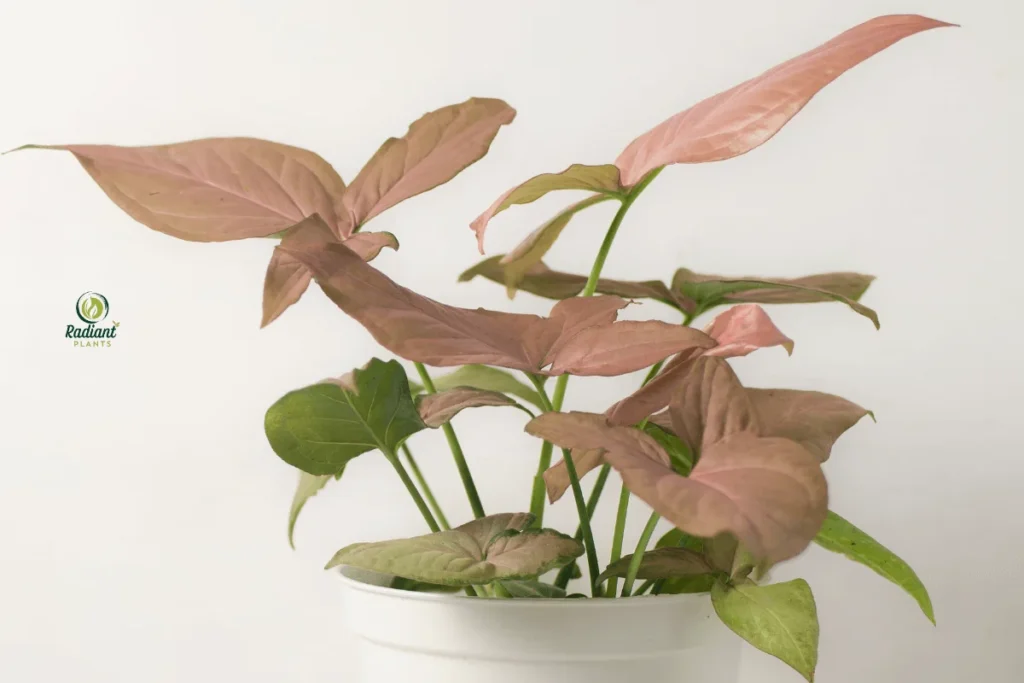
Walking into a room containing Neon Robusta feels like discovering a luminous treasure. Its vibrant lime-green foliage appears almost electric, bringing an energetic pop to any space it occupies. This variety maintains impressive color even in less-than-perfect conditions.
Neon Robusta appreciates bright indirect light to maintain its striking coloration, though it tolerates medium light admirably. Place near east-facing windows for morning sunshine that intensifies its characteristic glow without risking leaf burn.
For maximum impact, position your Neon Robusta against darker walls or furniture where its radiant foliage creates dramatic contrast. This variety particularly shines in modern interiors with neutral color schemes, adding a vibrant focal point.
3. Syngonium Pink Splash
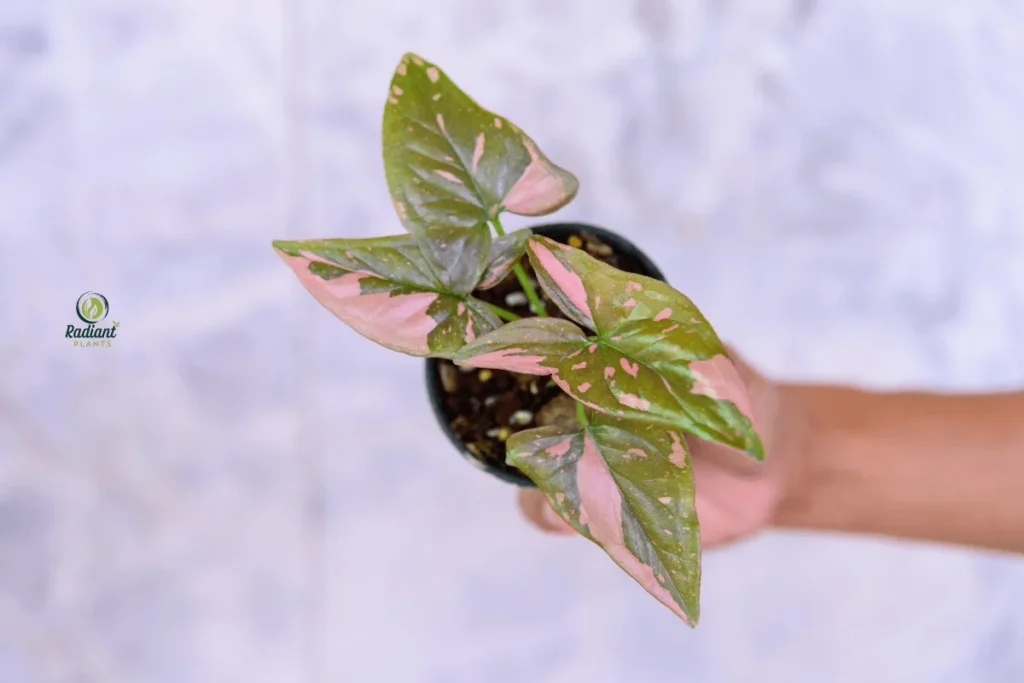
For those who adore a touch of blush in their plant collection, Pink Splash delivers enchanting pink variegation against verdant green backgrounds. Each leaf tells its own story with unique patterns that develop character over time.
Pink Splash requires slightly more exacting care to maintain its distinctive coloration. Medium to bright indirect light encourages the pink tones, while higher humidity levels (around 60%) help preserve these delicate hues. Consider grouping with other plants or using a pebble tray to create a humidity microclimate.
To enhance those coveted pink tones, ensure steady temperatures between 65-75°F and avoid cold drafts. Occasional fertilization with a balanced houseplant formula (diluted to half-strength) during the growing season supports healthy coloration.
4. Syngonium Berry Allusion
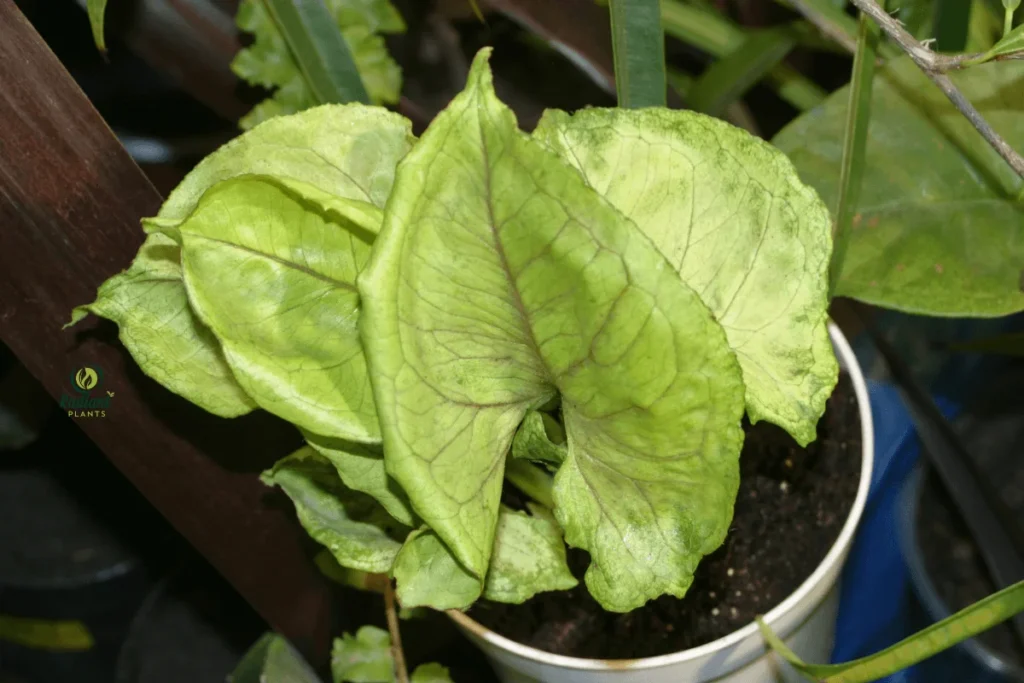
Berry Allusion brings dramatic flair to your collection with its deep burgundy tones accented by delicate pink veining. This variety offers sophisticated color rarely found in houseplants, making it a standout choice for collectors seeking something extraordinary.
This variety maintains its rich coloration in medium indirect light. Direct sunlight risks bleaching those magnificent burgundy tones, while insufficient light may cause the plant to revert to greener shades. Consistent moisture (without soggy soil) supports vibrant foliage development.
Berry Allusion creates stunning displays when paired with silver or white-variegated plants, where its deep tones provide rich contrast. Consider showcasing in metallic or crystal planters that enhance its jewel-like quality, particularly in spaces with warm-toned woods or textiles.
5. Syngonium Confetti
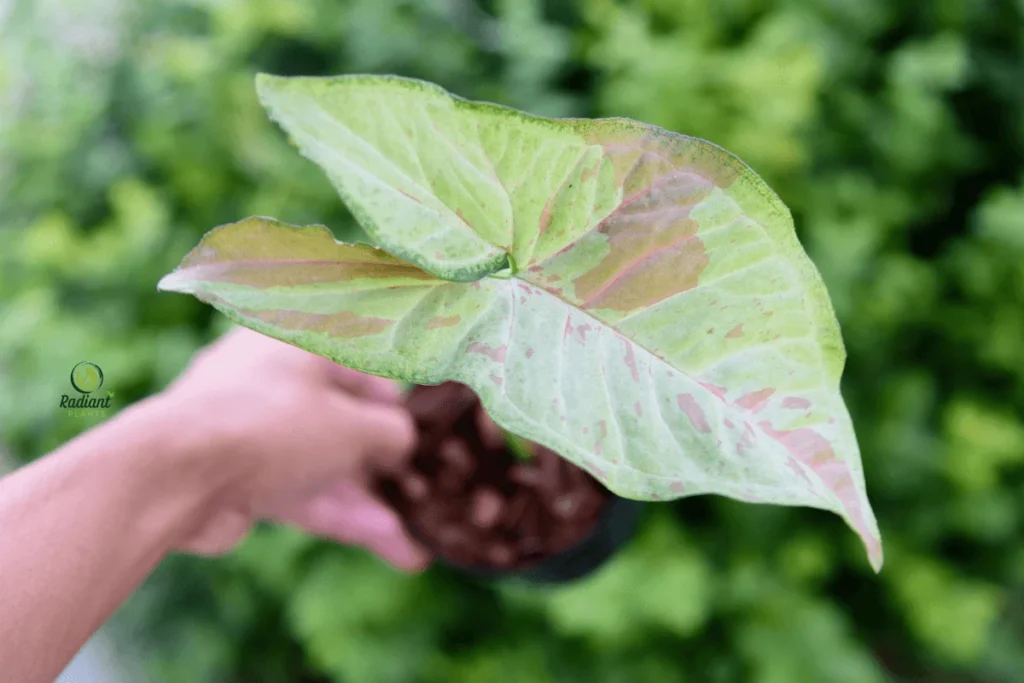
True to its festive name, Confetti presents green leaves liberally sprinkled with white speckles resembling celebratory confetti frozen in time. No two leaves display identical patterns, making each plant a unique living artwork.
This collector’s variety appreciates medium indirect light and consistent, but not excessive, moisture. The distinct speckled pattern remains more pronounced with proper care, creating a continually evolving display as new leaves emerge.
Confetti holds special appeal for collectors due to its relative scarcity and distinctive appearance. Its playful pattern brings visual texture to minimalist spaces and complements both modern and traditional décor styles. Display where its intricate details can be appreciated up close.
6. Syngonium Pixie
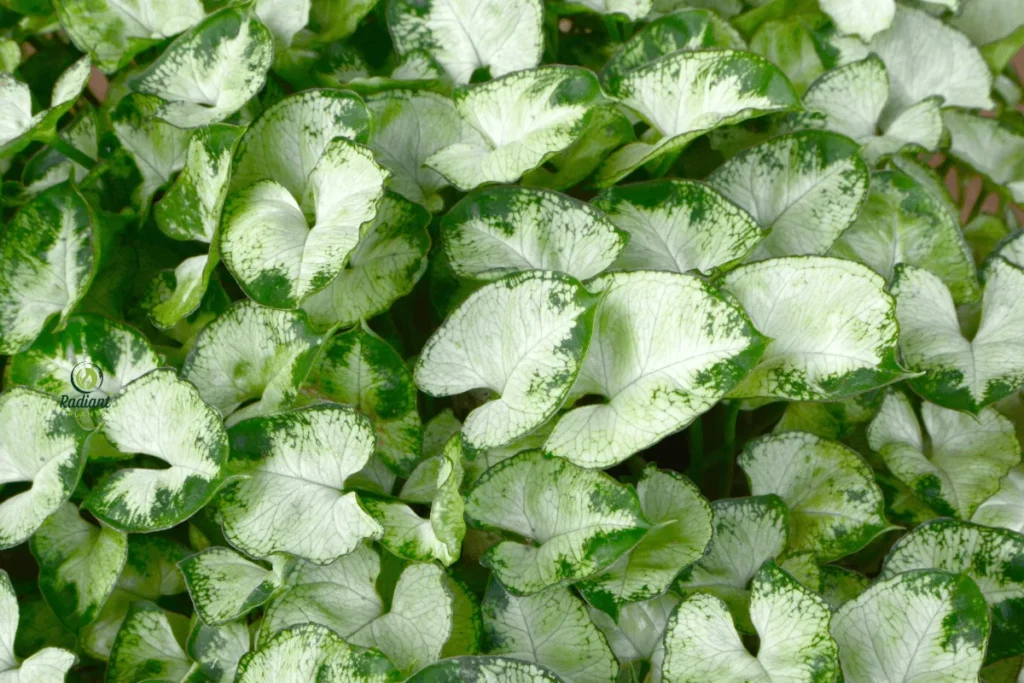
Perfect for smaller spaces or tabletop displays, Pixie maintains a naturally compact growth habit while displaying the characteristic arrowhead leaf shape. This petite variety typically grows to just 8-12 inches tall, making it ideal for limited spaces.
Pixie thrives in medium indirect light and appreciates consistent moisture with excellent drainage. Its manageable size makes it perfect for terrariums, dish gardens, or small decorative containers where larger varieties would quickly outgrow their welcome.
Create charming miniature landscapes by grouping Pixie with other small-statured plants like button ferns, baby tears, or miniature African violets. Their diminutive size allows for creative arrangements in unusual containers—from vintage teacups to small decorative bowls.
7. Syngonium Three Kings
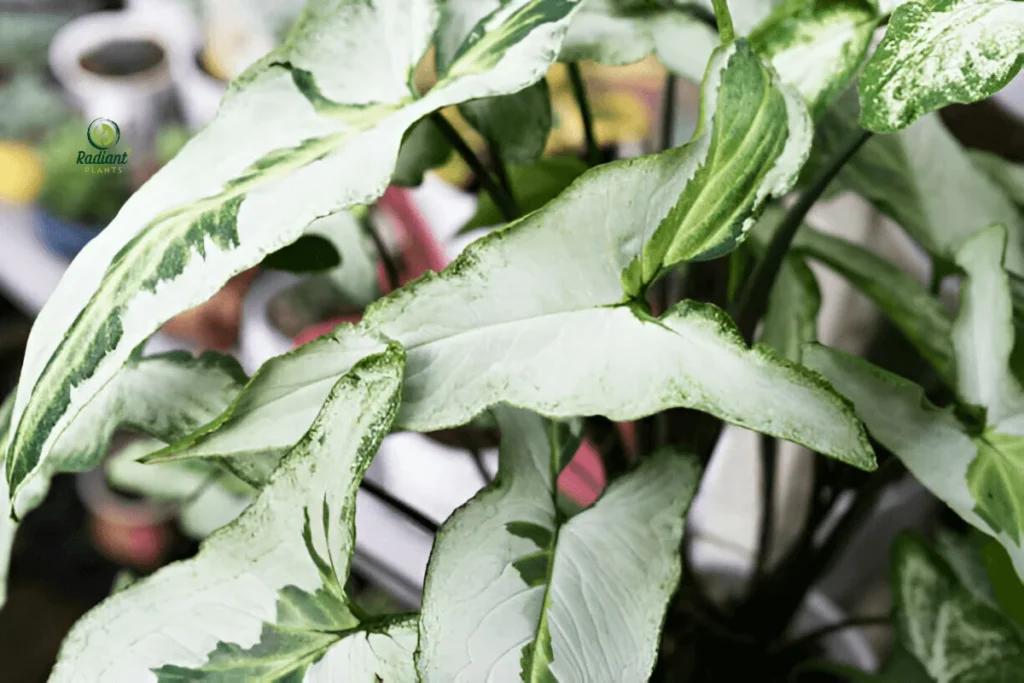
The aptly named Three Kings presents a regal display of tri-color variegation, with leaves showcasing harmonious blends of green, white, and pink. This collector’s variety commands attention and serves as a stunning focal point in any plant collection.
Three Kings requires more attentive care than some varieties. Bright indirect light encourages vibrant coloration without scorching delicate leaves. Consistent humidity above 50% helps maintain those striking patterns, making humidifiers or pebble trays beneficial companions.
For successful growth, maintain even moisture levels and temperatures between 65-80°F. Protect from drafts and sudden temperature changes that can stress this sensitive variety. Your diligence rewards you with some of the most spectacular foliage in the arrowhead plant kingdom.
Stunning Elephant Ear Plant Types That Thrive Indoors and Out
Essential Arrowhead Plant Care Guide
The remarkable adaptability of arrowhead plants contributes significantly to their popularity. With some fundamental knowledge, you’ll watch your plants thrive through seasons of growth.
Lighting Requirements for Thriving Arrowhead Plants
While arrowhead plants demonstrate impressive adaptability to various light conditions, understanding their preferences helps maximize growth and coloration. Most varieties flourish in medium to bright indirect light, mimicking their natural habitat beneath the rainforest canopy.
Watch for clues indicating light imbalance. Leggy growth with elongated stems and smaller leaves suggests insufficient light. Move your plant to a brighter location, perhaps near an east-facing window or a few feet from southern exposure. Conversely, scorched or bleached patches indicate excessive direct sunlight. Pull back from intense afternoon rays or filter through sheer curtains.
Seasonal adjustments become necessary as daylight hours shift. During winter’s shorter days, you might relocate plants closer to windows or supplement with grow lights to maintain vigorous growth. Summer often requires the opposite—protecting sensitive varieties from intense seasonal sunlight.
Watering Your Arrowhead Plant for Maximum Growth
Establishing an appropriate watering rhythm represents perhaps the most critical aspect of arrowhead plant care. These tropical natives prefer consistently moist but never soggy soil. Allow the top inch to dry between waterings, then thoroughly saturate until water drains freely from the bottom.
Seasonal adjustments prove essential—plants typically require more frequent watering during active spring and summer growth, while winter dormancy necessitates reduced frequency. Always check soil moisture with your finger rather than adhering to rigid schedules, as individual home environments vary dramatically.
Learning to recognize water-related stress saves plants from common pitfalls. Overwatering manifests as yellowing leaves, often beginning with lower foliage, and potentially leads to root rot if uncorrected. Underwatering appears as curling, crispy leaf edges and overall wilting. When in doubt, slightly underwatering poses less risk than overwatering these resilient plants.
Soil, Humidity, and Temperature Needs
Arrowhead plants thrive in well-draining, slightly acidic soil mixtures. Create an ideal growing medium by combining two parts quality potting soil with one part perlite or orchid bark to enhance drainage and aeration. This mixture provides stability while preventing the waterlogged conditions that lead to root problems.
As tropical natives, these plants appreciate humidity levels between 40% and 60%. Standard household environments often fall below these levels, particularly during winter heating seasons. Increase ambient moisture by grouping plants (they create their microclimate), placing them on pebble trays with water, or using room humidifiers during particularly dry periods.
Maintain temperatures between 65-85°F (18-29°C) for optimal growth. Protect from drafts, heating vents, and sudden temperature fluctuations that stress tropical plants. Most varieties tolerate standard room temperatures admirably, though they appreciate consistency.
Fertilizing for Lush, Vibrant Foliage
Support your arrowhead plant’s lush growth with appropriate nutrition. During active growing seasons (spring through early fall), apply a balanced liquid houseplant fertilizer diluted to half the recommended strength every 4-6 weeks. This measured approach provides necessary nutrients without risking fertilizer burn.
Choose between organic options like fish emulsion or worm castings versus synthetic formulations based on personal preference. Organic fertilizers generally release nutrients more gradually, reducing the risk of over-fertilization, while quality synthetic formulations offer precise nutrient ratios.
Seasonal adjustments remain crucial—plants require little to no fertilization during winter dormancy when growth naturally slows. Resume regular feeding when you notice new growth emerging in spring. Remember that undernourished plants grow slowly with smaller leaves, while over-fertilized specimens may exhibit leaf burn or mineral salt buildup in the soil.
Arrowhead Plant Care Tips & Tricks! | Syngonium Vine Houseplant Care
Troubleshooting Common Arrowhead Plant Problems
Even with attentive care, arrowhead plants occasionally encounter challenges. Quick identification and appropriate response help maintain thriving specimens.
Addressing Leaf Issues
Yellow leaves frequently indicate watering issues, typically overwatering that leads to root oxygen deprivation. Immediately assess soil moisture and adjust your watering routine. Allow soil to dry more thoroughly between waterings and ensure proper drainage. If many leaves show symptoms, consider checking roots for rot and repotting in fresh soil if necessary.
Brown leaf edges commonly signal low humidity or mineral buildup from tap water or fertilizer. Increase ambient moisture through humidity trays or grouping plants. Consider using filtered or distilled water if your tap water contains high mineral content. Flush the soil thoroughly every few months to remove accumulated salts.
Fading variegation typically results from insufficient light exposure. Variegated sections contain less chlorophyll, requiring brighter conditions to maintain distinctive patterns. Gradually increase light levels, avoiding sudden changes that shock plants. Some reversion may occur naturally as plants mature, particularly on older leaves.
Pest Management for Arrowhead Plants
Spider mites present common challenges for arrowhead plants, particularly during dry winter months. These nearly microscopic pests create fine webbing and cause stippling on leaf surfaces. Increase humidity and regularly shower plants to discourage infestations. For active problems, apply insecticidal soap or neem oil solution to all surfaces, including leaf undersides.
Mealybugs appear as cottony white masses typically found along stems and leaf joints. Treat isolated infestations by dabbing with alcohol-soaked cotton swabs. For more extensive problems, apply insecticidal soap weekly until resolved, ensuring complete coverage of all plant surfaces.
Prevention remains the most effective strategy—regularly inspect new plants before introducing them to your collection and maintain quarantine periods. Healthy plants naturally resist pest pressure, so maintaining optimal growing conditions provides natural protection against common invaders.
Reviving a Struggling Arrowhead Plant
When facing a significant decline, implement a comprehensive rescue plan. First, assess root health by gently removing the plant from its pot. Healthy roots appear firm and white or tan, while rotting roots feel mushy and look dark. Trim damaged roots with clean shears and repot in fresh soil mixture.
Strategic pruning removes damaged foliage while encouraging new growth. Use clean, sharp scissors to trim yellowed or damaged leaves at their base. For leggy plants, consider more extensive pruning, cutting stems back to healthy nodes where new growth can emerge.
Sometimes propagation offers the most effective rescue method, particularly when the main plant appears severely compromised. Healthy stem cuttings root readily in water or soil, preserving the plant’s genetic material even when the parent plant cannot be saved.
Propagation: Multiply Your Arrowhead Plant Collection
Few houseplants propagate as willingly as arrowhead plants, making them perfect for expanding your collection or sharing with fellow plant enthusiasts.
Step-by-Step Propagation Guide
- Select healthy cuttings from mature stems, ensuring each contains at least one node (the slightly swollen area where leaves emerge). Optimal cuttings include 2-3 leaves and measure approximately 4-6 inches long. Use clean, sharp scissors to avoid crushing stems.
- For water propagation, place cuttings in clean water, ensuring nodes remain submerged while keeping leaves above the water line. Position in bright indirect light and change water weekly to prevent stagnation. Roots typically emerge within 2-3 weeks, eventually growing robust enough for soil transfer.
- Soil propagation offers an alternative approach. Insert cuttings directly into moist potting medium, burying nodes approximately one inch deep. Maintain consistent moisture and enclose in clear plastic to create a humidity dome that encourages root development.
- During the rooting period, provide bright indirect light and stable temperatures between 70-80°F. Avoid fertilizing until new growth indicates successful root establishment, typically within 4-6 weeks, depending on environmental conditions.
- Transplant water-rooted cuttings once roots reach 1-2 inches long. Handle carefully to avoid damage, and plant in a well-draining soil mixture. Keep soil consistently moist for the first few weeks as plants adjust to their new growing medium.
Creating Stunning Arrangements with Propagated Plants
Propagated arrowhead plants make thoughtful, sustainable gifts for fellow plant enthusiasts. Present rooted cuttings in decorative containers with care instructions for a personalized gift that continues growing. Consider themed presentations matching recipient preferences—perhaps a boho macramé hanger or modern ceramic vessel.
Create visually striking displays by combining multiple varieties in a single planter. Contrast the lime tones of Neon Robusta against the burgundy hues of Berry Allusion, or pair compact Pixie with trailing White Butterfly for textural interest. Ensure all varieties share similar care requirements for sustainable arrangements.
Explore creative container options that complement these versatile plants. Vintage vessels, wall-mounted planters, terrarium landscapes, or hanging displays all showcase arrowhead plants effectively. Their adaptable nature allows experimentation with display methods that match your aesthetic.
Styling with Arrowhead Plants: Design Ideas for Every Space
Arrowhead plants adapt remarkably to various décor styles, making them versatile additions to nearly any interior design approach.
Arrowhead Plants in Different Home Styles
In modern minimalist settings, arrowhead plants provide organic texture that softens clean lines and neutral palettes. Consider varieties with distinctive form, like Neon Robusta or White Butterfly, displayed in simple concrete or ceramic planters. Their architectural leaf shapes complement contemporary spaces without introducing visual clutter.
Bohemian and eclectic spaces welcome the more colorful varieties. Berry Allusion and Three Kings bring rich, unexpected color that enhances layered textiles and global-inspired elements. Display in handcrafted vessels, macramé hangers, or alongside vintage elements for an effortlessly curated look.
Traditional home integration calls for classic varieties like White Butterfly in timeless containers—perhaps brass planters, ceramic urns, or wooden plant stands. Their elegant form complements traditional furnishings while introducing living elements that prevent spaces from feeling static or overly formal.
Creative Display Methods
Hanging planters showcase trailing arrowhead varieties to magnificent effect. As plants mature and stems lengthen, they create living curtains of foliage. Position near windows (avoiding direct sun) where cascading stems catch natural light, or use as room dividers in open-concept spaces.
Climbing supports transform arrowhead plants into vertical features. Moss poles, trellises, or decorative ladders provide structure as plants naturally reach upward. Gently secure stems with plant ties or twine as they establish climbing patterns, creating living sculptures that evolve.
Shelf and tabletop arrangements allow creative staging in various containers. Group plants at different heights, pairing arrowhead varieties with complementary textures like ferns or peperomias. Create vignettes that tell visual stories through plant combinations, containers, and decorative elements.
Pairing with Other Plants
Complementary plant pairings enhance the beauty of arrowhead plants while creating visually cohesive groupings. Consider texture contrasts—pairing arrowhead’s broad leaves with feathery ferns, structural snake plants, or trailing pothos varieties. These combinations create multidimensional displays with various forms and growth habits.
Create balanced plant groupings by considering mature sizes and growth rates. Fast-growing varieties like White Butterfly pair well with similarly vigorous plants, while slower-growing specimens like Three Kings complement other collectors’ varieties that develop gradually.
Color and texture combinations create harmonious displays. Echo the pink tones of Pink Splash with flowering plants like begonias or anthuriums. Create monochromatic arrangements using various green tones, or develop complementary color schemes based on color wheel principles for sophisticated botanical displays.
Arrowhead Plant Varieties Comparison Table
| Variety | Leaf Color/Pattern | Light Needs | Difficulty Level | Special Features |
|---|---|---|---|---|
| White Butterfly | Green with white variegation | Medium indirect | Beginner | Fast growing |
| Neon Robusta | Bright lime green | Bright indirect | Beginner | Vibrant color even in lower light |
| Pink Splash | Green with pink variegation | Medium to bright indirect | Intermediate | Requires higher humidity for pink color |
| Berry Allusion | Burgundy with pink veining | Medium indirect | Intermediate | Dramatic dark foliage |
| Confetti | Green with white speckles | Medium indirect | Intermediate | Unique speckled pattern |
| Pixie | Compact green | Medium indirect | Beginner | Perfect for small spaces |
| Three Kings | Tri-color variegation | Bright indirect | Advanced | Collector’s variety |
FAQs About Arrowhead Plants
FAQ: Getting the Most From Your Arrowhead Plant
Why are the leaves on my arrowhead plant turning yellow?
Yellowing leaves on an arrowhead plant typically indicate overwatering. Allow the top inch of soil to dry out between waterings and ensure your pot has proper drainage to prevent root rot.
How often should I repot my arrowhead plant?
Arrowhead plants benefit from repotting every 1-2 years, preferably in spring when they’re entering their active growth phase. Choose a pot just 1-2 inches larger than the current one.
Can arrowhead plants live in water permanently?
While arrowhead plants can root in water, they thrive best when eventually transferred to soil. For long-term water growing, use a hydroponic setup with proper nutrients.
Are arrowhead plants toxic to pets?
Yes, arrowhead plants contain calcium oxalate crystals that are toxic to cats and dogs if ingested. Keep these plants out of reach of curious pets.
How can I encourage my arrowhead plant to climb?
Provide a moss pole or trellis and gently secure stems to the support with plant ties. Arrowhead plants naturally seek vertical growth as they mature.
My arrowhead plant was full but is now leggy. What happened?
Legginess in arrowhead plants usually indicates insufficient light. Move your plant to a brighter location with indirect light and consider pruning to encourage fuller growth.
How can I make my variegated arrowhead plant more colorful?
Variegated arrowhead plants need bright, indirect light to maintain their distinctive patterns. Avoid too little light, which causes variegation to fade, but also avoid direct sunlight, which can burn leaves.
Conclusion: Bringing Arrowhead Plant Magic Into Your Life
The arrowhead plant family offers something for every plant lover—from the beginner-friendly White Butterfly to the collectible Three Kings. These versatile houseplants adapt to various conditions while bringing unique beauty and air-purifying benefits to your space. Whether displayed as trailing vines, trained to climb, or kept compact through regular pruning, arrowhead plants reward your care with constant growth and evolving leaf shapes.
As you welcome these tropical treasures into your home, you’re not just decorating with plants—you’re creating living relationships that change and grow alongside you. Which arrowhead plant variety spoke to your heart? Perhaps it’s time to add a new green friend to your collection or start propagating the ones you already love to share with friends. The journey with arrowhead plants is one of continuous discovery and joy.
Have you experienced success with any particular arrowhead plant variety? Share your favorite growing tips or display ideas in the comments below! Your fellow plant enthusiasts would love to learn from your experiences and celebrate your green thumb victories. Remember to tag us in your social media posts showcasing your beautiful arrowhead plants—we might feature your photos in our upcoming plant spotlight series!

